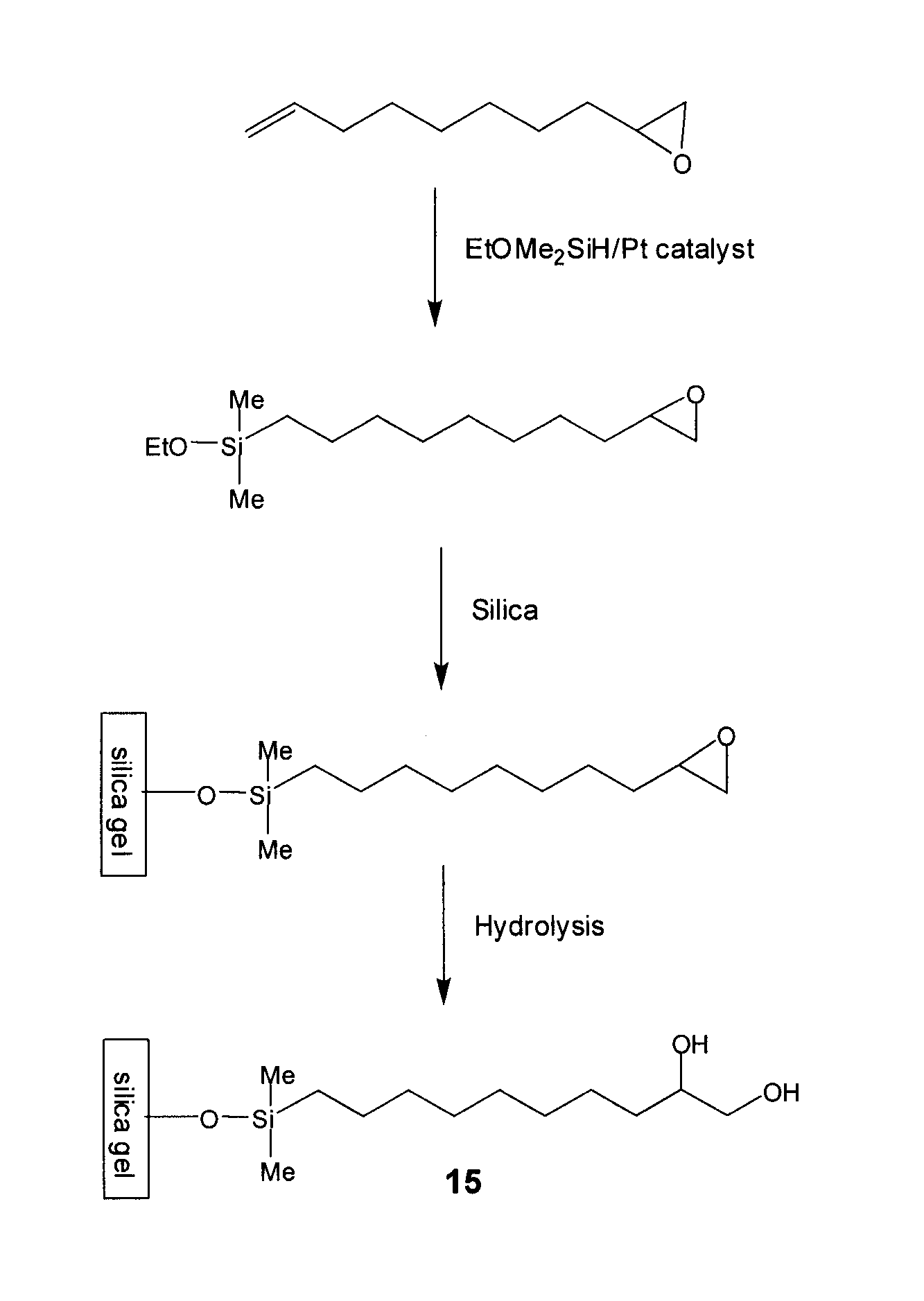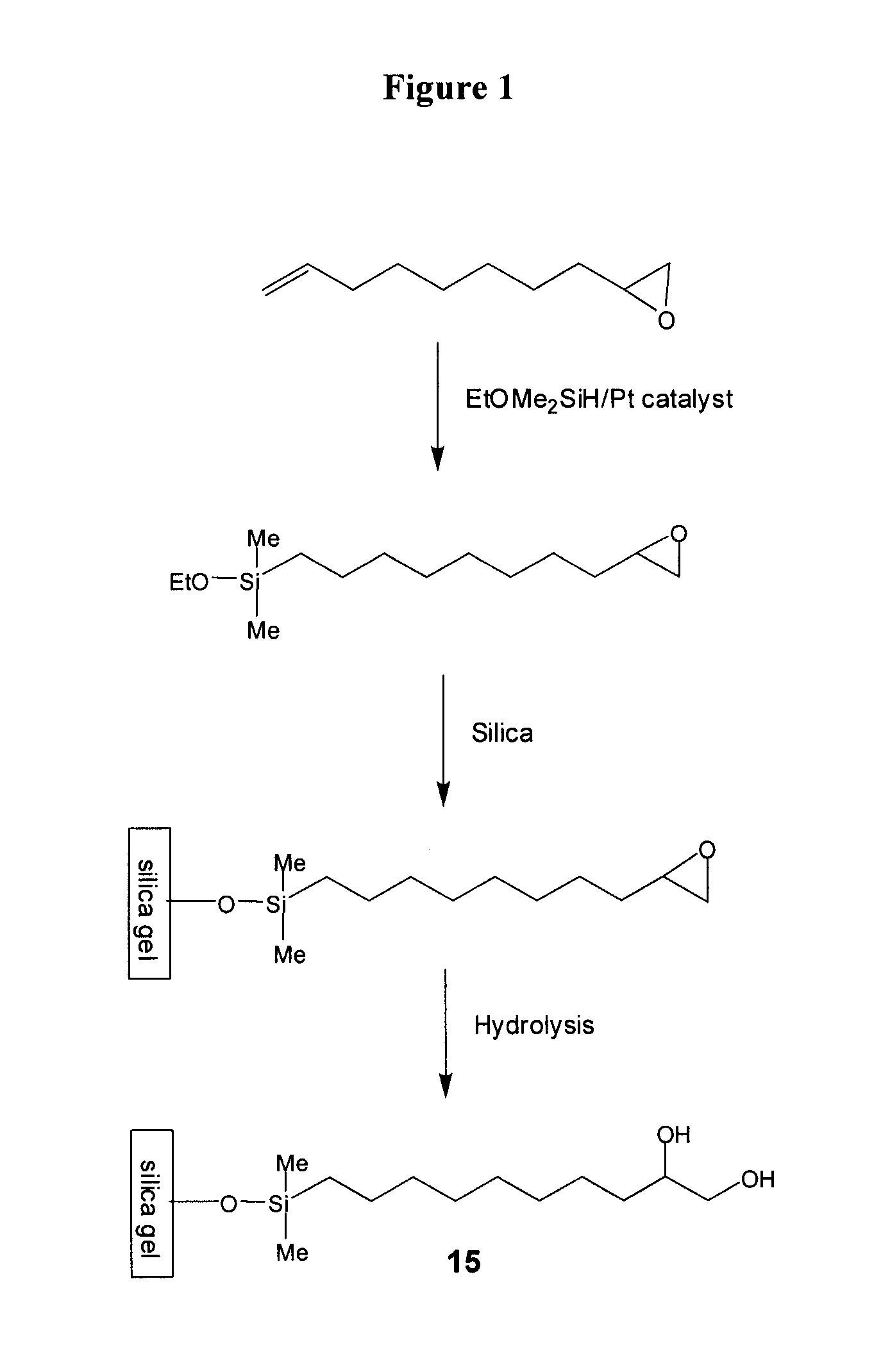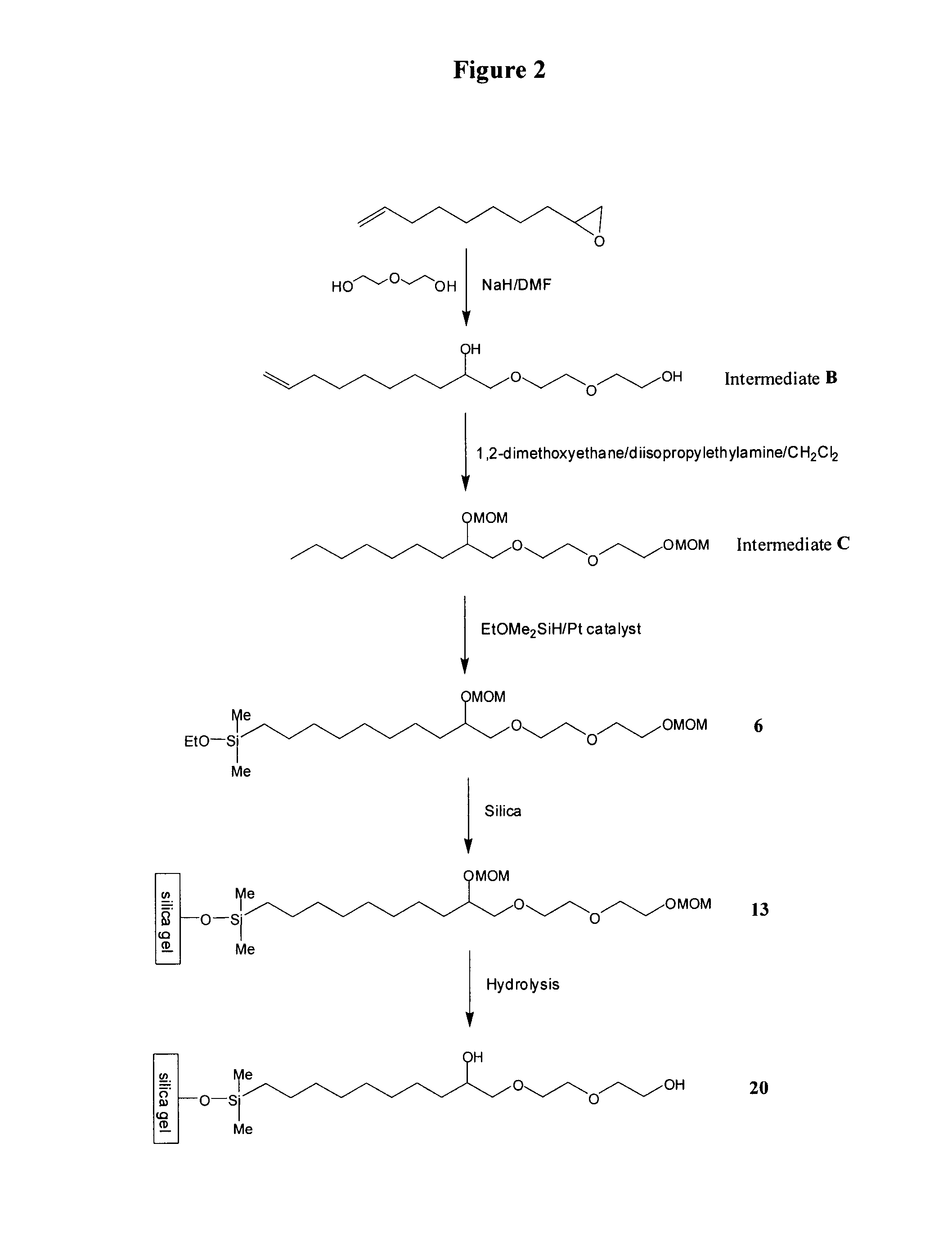Compositions useful as chromatography stationary phases
a stationary phase and composition technology, applied in the field of compositions, can solve the problems of difficult inability to retain or separate highly polar molecules in conventional reversed phase media, and difficulty in chromatographic separation of polar compounds, and achieve the effect of unique chromatographic properties
- Summary
- Abstract
- Description
- Claims
- Application Information
AI Technical Summary
Benefits of technology
Problems solved by technology
Method used
Image
Examples
example 1
Synthesis of Silyl Ligand 1
[0123]To a stirred solution of 50 g 1,2-epoxy-9-decene (e.g., Aldrich), 100 g of (EtO)Me2SiH (e.g., Gelest) in 30 mL of toluene in a 1-L round bottom flask at ambient temperature were carefully added 0.5 g of Pt(0) catalyst (0.1% wt) (e.g., Gelest). Occasionally, an exothermic reaction is observed upon addition of the catalyst. The flask was equipped with a condenser and the reaction mixture was heated to 50° C. for 8 h. The reaction was monitored using gas chromatography.
[0124]When the conversion was found to be higher than 60% by GC, all volatiles were removed in vacuo. Residual volatiles were removed by Kugelrohr Distillation (120° C. / 0.05 torr).
example 2
Synthesis of Silyl Ligand 2
[0125]To a stirred solution of 50 g 1,2-epoxy-9-decene (e.g., Aldrich), 100 g of (EtO)2MeSiH (e.g., Gelest) in 30 mL of toluene in a 1-L round bottom flask at ambient temperature were carefully added 0.5 g of Pt(0) catalyst (0.1% wt) (e.g., Gelest). Occasionally, an exothermic reaction is observed upon addition of the catalyst. The flask was equipped with a condenser and the reaction mixture was heated to 50° C. for 8 h. The reaction was monitored using gas chromatography.
[0126]When the conversion was found to be higher than 60% by GC, all volatiles were removed in vacuo. Residual volatiles were removed by Kugelrohr Distillation (140° C. / 0.11 torr).
example 3
Synthesis of Silyl Ligand 6
[0127]To 5.89 g (0.24 mol, 1.2 eq) of sodium hydride in an oven-dried four necked 1 L flask equipped with a mechanical stirrer, reflux condenser, additional funnel, internal thermometer and nitrogen inlet, were added 600 mL of anhydrous N,N-dimethylformamide. 127.82 g (1.2 mol, 6 eq) of diethylene glycol were added dropwise in one hour. The mixture was stirred at 75° C. for four hours before 30.3 g of 1,2-epoxy-9-decene (0.2 mol, 1 eq) were added dropwise over 30 minutes. The reaction mixture was stirred at 75° C. overnight and was then cooled to room temperature. The volatiles were removed in vacuo. 300 mL of water were added to the residue. Concentrated HCl was then added until pH 2-3. The product was extracted with methylene chloride (3×250 mL). The organic phase was washed with water (3×250 mL) and brine (2×250 mL) and was dried over MgSO4. The volatiles were removed in vacuo. The residue was subjected to Kugelrohr distillation (145° C. / 0.03 mmHg) to g...
PUM
| Property | Measurement | Unit |
|---|---|---|
| Temperature | aaaaa | aaaaa |
| Volume | aaaaa | aaaaa |
| Molar density | aaaaa | aaaaa |
Abstract
Description
Claims
Application Information
 Login to View More
Login to View More - R&D
- Intellectual Property
- Life Sciences
- Materials
- Tech Scout
- Unparalleled Data Quality
- Higher Quality Content
- 60% Fewer Hallucinations
Browse by: Latest US Patents, China's latest patents, Technical Efficacy Thesaurus, Application Domain, Technology Topic, Popular Technical Reports.
© 2025 PatSnap. All rights reserved.Legal|Privacy policy|Modern Slavery Act Transparency Statement|Sitemap|About US| Contact US: help@patsnap.com



